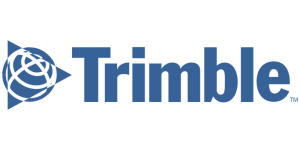How can Google Ads be used to target specific demographics for cancer treatments in 2024?
In an era where precision marketing is not just a possibility but a necessity, healthcare providers are consistently looking for innovative ways to reach the individuals who need their services most. As we move into 2024, the power of Google Ads stands out as a beacon of hope for those in the medical field, particularly for those offering cancer treatments. The ability to target specific demographics is not just about business growth; it’s about connecting patients with life-saving therapies and support systems at a time when they need it most.
Enter JEMSU, a full-service digital advertising agency that has mastered the art of leveraging Google Ads to cut through the noise of the internet and deliver your message to the right audience. At JEMSU, we understand that targeting for medical services like cancer treatments requires a delicate balance of sensitivity and strategic precision. It’s about understanding the unique journeys of cancer patients and their loved ones, and aligning your message with their needs, fears, and hopes.
As we look at the capabilities of Google Ads in 2024, JEMSU is at the forefront, utilizing advanced targeting options that allow for an unprecedented level of demographic specificity. From age, location, and language to browsing behaviors and personal interests, the tools at our disposal enable us to design campaigns that are not just seen, but also resonate with those who are actively seeking cancer treatment options. In this article, we will explore how Google Ads, when wielded by the experienced hands of the JEMSU team, can become a lifeline for cancer treatment centers to reach the right people at the right time.
Table of Contents
1. Understanding Demographic Targeting in Google Ads
2. Complying with Healthcare Advertising Regulations
3. Identifying and Defining the Target Demographics for Cancer Treatments
4. Utilizing Detailed Demographics and Audience Segmentation
5. Crafting Ad Content and Landing Pages for Specific Demographics
6. Measuring and Optimizing Campaign Performance for Demographic Targeting
7. FAQs
Instant SEO Checker + Score & Report
Enter the URL of any landing page to see how optimized it is for one keyword or phrase...
Understanding Demographic Targeting in Google Ads
In the realm of digital marketing, demographic targeting is an essential strategy for businesses looking to reach specific groups of people. At JEMSU, we recognize the power of Google Ads as a tool to hone in on the audience segments most relevant to our clients’ offerings. When it comes to advertising cancer treatments, understanding demographic targeting in Google Ads is pivotal for reaching those who may benefit from the available medical services and innovations.
Google Ads provides advertisers with the capability to target users based on various demographic parameters such as age, gender, location, and even household income. This precision allows businesses, including healthcare providers, to tailor their messaging to resonate with the individuals who are most likely to be in need of cancer treatment options. For instance, if a particular cancer treatment is more effective for a certain age group, JEMSU can set up a Google Ads campaign that specifically targets that age bracket, thus ensuring that the ads reach the audience with the highest potential need for the treatment.
Furthermore, demographic targeting in Google Ads goes beyond basic categories and delves into life events and interests that can signal a user’s potential need for cancer-related information. For example, a family history of cancer could be a factor in targeting, as those with such backgrounds may be more proactive in seeking preventive treatments or information. JEMSU leverages these detailed demographic insights to craft campaigns that not only reach the right audience but also address their concerns and needs effectively.
The utilization of demographic targeting is akin to a skilled archer aiming their arrow with precision; JEMSU aims its digital marketing strategies to hit the bullseye of audience engagement and conversion. By understanding the demographics of those seeking cancer treatments, campaigns can be optimized to ensure that resources are not squandered on broad, unfocused advertising efforts.
To illustrate, let’s consider a hypothetical example: JEMSU is approached by a cancer treatment center specializing in breast cancer care. We would analyze data to understand the demographic profile of individuals most affected by breast cancer, which predominantly includes women in certain age groups. Armed with this information, our team would create Google Ads campaigns that target women within this demographic, using language and imagery that speaks to their concerns and encourages them to learn more about the treatment options offered by the center.
By mastering demographic targeting in Google Ads, JEMSU ensures that our clients in the healthcare sector, like those providing cancer treatments, can communicate their message to the right people at the right time, increasing the likelihood of patient engagement and, ultimately, providing valuable services to those in need.
Google Ads Success Example
The Challenge: The Challenge: Increase new dental patients with better Google Ads campaigns.
Complying with Healthcare Advertising Regulations
In the realm of digital marketing, especially within sensitive sectors such as healthcare, compliance with advertising regulations is paramount. For JEMSU, navigating the intricate landscape of legalities when creating Google Ads campaigns for cancer treatments is a critical task that must be handled with the highest level of diligence and expertise. The healthcare industry is heavily regulated to protect consumers, and the promotion of cancer treatments is subject to a myriad of regulations that dictate what can and cannot be said or implied in advertisements.
Google itself has strict policies in place that restrict the advertising of healthcare-related services. These policies are designed to ensure that ads are not misleading or deceptive, and that they provide a beneficial user experience. For instance, Google prohibits the promotion of unapproved pharmaceuticals and supplements. Additionally, any claims made in ads about the effectiveness of cancer treatments must be evidence-based and supported by legitimate scientific consensus. It is crucial for JEMSU to stay abreast of these guidelines, as non-compliance can result in ads being disapproved or, in severe cases, the suspension of the advertiser’s account.
Moreover, in the United States, the Health Insurance Portability and Accountability Act (HIPAA) plays a significant role in how patient information can be used in advertising. While HIPAA does not directly govern advertising content, it does restrict how patient data can be utilized for marketing purposes. JEMSU ensures that any strategy developed for targeting specific demographics for cancer treatments is not only compliant with Google’s advertising policies but also respects patient privacy and adheres to HIPAA regulations.
To exemplify the importance of compliance, let’s consider a hypothetical scenario. If JEMSU were to create an ad campaign targeting women over the age of 40 for a new breast cancer treatment, it would be essential to focus on the accuracy and sensitivity of the message. Any statistical data used, such as “1 in 8 women will be diagnosed with breast cancer in their lifetime,” must be sourced from reputable organizations like the American Cancer Society. Furthermore, the ad content would need to avoid making any promises of cures or guarantees of success, as such statements could be considered misleading.
In the dynamic landscape of digital advertising and healthcare, JEMSU is committed to crafting Google Ads campaigns that are not only effective in reaching the intended demographics for cancer treatments but also fully compliant with all pertinent regulations. By doing so, JEMSU not only upholds its reputation as a responsible digital advertising agency but also contributes to the ethical promotion of medical treatments that can make a significant difference in patients’ lives.
Identifying and Defining the Target Demographics for Cancer Treatments
In the realm of digital advertising, particularly for sensitive and specialized services such as cancer treatments, identifying and defining the target demographics is a crucial step that can significantly influence the success of a campaign. At JEMSU, we understand that a one-size-fits-all approach does not suffice when dealing with healthcare marketing, especially for conditions as complex and varied as cancer.
The process begins by conducting extensive research to understand who is most likely to be searching for cancer treatment options. Demographic data such as age, gender, and location play a fundamental role in shaping the marketing strategy. For instance, certain types of cancer may be more prevalent in specific age groups or genders. Breast cancer, for example, predominantly affects women, and thus, campaigns for breast cancer treatments would be tailored to reach a female audience.
Moreover, socio-economic status and even particular lifestyle factors can inform a demographic profile. It might be found through research that individuals in certain professions or with specific hobbies are more health-conscious and would be more proactive in seeking treatment options. JEMSU leverages such insights to create more targeted and effective Google Ads campaigns.
But beyond basic demographic data, there are psychographic elements such as the patient’s emotional state, their family’s concerns, and the urgency of treatment which must be considered. For example, a family member searching for treatment options for a loved one might respond differently to an ad compared to a patient who is in the early stages of diagnosis. JEMSU expertly crafts messaging and chooses ad placements that resonate with the emotional and psychological state of the target demographic.
In 2024, advanced machine learning algorithms and data analytics tools are expected to further refine the process of identifying and defining target demographics for cancer treatments. These technological advancements will allow for more precise segmentation, enabling campaigns to reach even the most niche audiences with tailored messages.
By utilizing real-world examples and continuously analyzing the data, JEMSU stays at the forefront of demographic targeting. For instance, a campaign for a new immunotherapy treatment might focus on middle-aged adults who have shown a pattern of researching health and wellness advancements, thus indicating a potential interest in cutting-edge treatment options.
In this highly specialized field, the key lies in balancing sensitivity with strategic targeting. It’s not just about reaching a wide audience but reaching the right audience with the right message at the right time. JEMSU’s expertise in identifying and defining the target demographics ensures that our clients’ Google Ads campaigns are both compassionate and compelling, ultimately driving meaningful engagement and providing valuable information to those in need of cancer treatments.
SEO Success Story
The Challenge: The Challenge: Design an SEO friendly website for a new pediatric dentist office. Increase new patient acquisitions via organic traffic and paid search traffic. Build customer & brand validation acquiring & marketing 5 star reviews.
Utilizing Detailed Demographics and Audience Segmentation
In the world of digital advertising, utilizing detailed demographics and audience segmentation is akin to an expert gardener knowing exactly which conditions are required to nurture a rare and valuable plant. For a company like JEMSU, this expertise becomes crucial when creating Google Ads campaigns, especially in sensitive fields such as targeting specific demographics for cancer treatments in 2024.
At JEMSU, we understand that demographic targeting is not just about age, gender, and location. It dives deeper into the layers of an audience’s lifestyle, interests, and behaviors. For instance, when dealing with cancer treatments, it’s essential to consider demographics such as household income, presence of health insurance, and even the type of device used for searches. A recent study showed that individuals seeking healthcare information are increasingly using mobile devices; thus, it would be prudent to segment audiences based on the device type to optimize the campaign’s reach and effectiveness.
Moreover, JEMSU leverages audience segmentation by crafting personas that represent the ideal patient seeking cancer treatments. This might include demographic details such as age groups that are statistically more prone to certain types of cancer, or the geographic regions that have higher incidences of these diseases. For example, if data suggests that a particular cancer type is more prevalent in areas with heavy industrial activity, Google Ads can be geo-targeted to those areas, ensuring that the information about treatment options reaches the audience that needs it most.
Using these targeted demographics, JEMSU creates tailored campaigns that resonate with each segment. For instance, younger demographics may respond better to video content and mobile-friendly formats, while an older audience might be more receptive to detailed text and testimonials. Audience segmentation also allows for the personalization of ad messages, ensuring that they speak directly to the concerns and needs of each demographic group.
In the delicate arena of healthcare advertising, JEMSU recognizes the importance of maintaining a balance between targeting for effective outreach and respecting the privacy and sensitivity of potential patients. We ensure that all strategies align with the latest regulations and ethical guidelines, providing an informative and supportive online environment for those seeking cancer treatments. By utilizing detailed demographics and audience segmentation, JEMSU not only enhances the efficacy of Google Ads campaigns but also contributes to the greater good by connecting patients with the potentially life-saving treatments they need.
Jemsu has been a great asset for us. The results have grown at strong positive linear rate. They have been extremely accessible, flexible, and very open about everything. Natalya is a star example of how to work with your accounts to drive them forward and adjusts to their quirks. Jaime is able to clearly communicate all of the work that is being done behind the scenes and make sure that all of my team is understanding.
I couldn’t be more pleased with my JEMSU Marketing Team!
Julia, Tamara, Joelle and Dally have exceeded my expectations in professionalism, creativity, organization, and turn around time with my Social Media Management project.
I have thoroughly enjoyed sharing my journey with this team of empowered women!
Thank you JEMSU! Your team designed and launched my new website, and developed strategies to drive traffic to my site, which has increased my sales. I highly recommend your Website & SEO Agency!
Jemsu has always been professional and wonderful to work with on both the SEO and website design side. They are responsive and take the time to explain to us the complicated world of SEO.
Jemsu is an excellent company to work with. Our new website blows away our competition! Unique, smooth, and flawless. Definite wow factor!
The folks at JEMSU were excellent in designing and launching our new website. The process was well laid out and executed. I could not be happier with the end product and would highly recommend them to anyone.
Jemsu is a great company to work with. Two prong approach with a new site and SEO. They totally redesigned my website to be more market specific, responsive, and mobile friendly. SEO strategy is broad based and starting to kick in. My marketing will also be adding Facebook and Google ads in the coming weeks. Thanks for your all you hard work.
JEMSU has wworked with our team to create a successful campaign including incorporating an overall rebranding of our multiple solutions. The JEMSU team is embracing of our vision and responds timely with life of our ideas.
JEMSU is great company to work with. They listen & really work hard to produce results. Johnathan & Sasha were such a big help. If you have a question or concern they are always there for you.
I would definitely recommend them to anyone looking to grow their company through adwords campaigns.
Jemsu have exceeded our expectations across all of our digital marketing requirements, and I would recommend their services to anyone who needs expertise in the digital marketing space.
JEMSU was able to quickly migrate my site to a new host and fix all my indexation issue. I look forward to growing my services with JEMSU as I gain traffic. It’s a real pleasure working with Julian and Juan, they’re both very professional, courteous and helpful.
JEMSU is incredible. The entire team Is professional, they don’t miss a deadlines and produce stellar work. I highly recommend Chris, Rianne, and their entire team.
We’ve been working with JEMSU for about five months and couldn’t be happier with the outcome. Our traffic is up and our leads are increasing in quality and quantity by the month. My only regret is not finding them sooner! They’re worth every penny!
Crafting Ad Content and Landing Pages for Specific Demographics
Crafting ad content and landing pages for specific demographics is a critical step in leveraging Google Ads for targeting potential patients interested in cancer treatments. When a digital advertising agency like JEMSU approaches this task, it focuses on creating a message that resonates with the particular demographic segments identified as likely to be interested in cancer treatments. This is where the art of personalization comes into play, and it’s far more than just using a person’s name in an email.
To effectively reach and engage specific demographics, JEMSU carefully tailors the ad copy to address the concerns, needs, and preferences of those demographics. For instance, older patients might be more responsive to ads that emphasize the safety and support aspects of cancer treatments, while younger demographics might be more engaged by content highlighting innovation and recovery success rates. It’s akin to speaking different dialects within the same language; each demographic has its nuances that must be respected and catered to.
Furthermore, JEMSU ensures that the landing pages are aligned with the ad content in terms of tone, style, and information. A landing page for a demographic concerned with the financial aspects of cancer treatment might include cost calculators or information on insurance coverage, while a page targeting caregivers might focus on support networks and the availability of care resources. These pages are like individual chapters in a book, each one tailored to tell a part of the story that is most relevant to the reader it is intended for.
In the realm of statistics, it’s important to note that landing pages personalized to specific demographics can significantly improve conversion rates. For example, a study by HubSpot found that targeted and personalized calls-to-action performed 202% better than generic ones. This demonstrates the power of demographic-specific content.
By combining the insights from demographic targeting with compelling ad content and landing pages, JEMSU not only attracts the right audience but also provides them with a seamless and reassuring experience that can guide them towards taking the desired action, such as scheduling a consultation or requesting more information about cancer treatments. This approach is not just about making a sale; it’s about providing value and building trust with an audience that is likely navigating one of the most challenging periods of their lives.
SEO Success Story
The Challenge: Increase dent repair and body damage bookings via better organic visibility and traffic.
Measuring and Optimizing Campaign Performance for Demographic Targeting
In the realm of digital advertising, particularly when dealing with sensitive topics such as cancer treatments, it is crucial to measure and optimize campaign performance to ensure the effectiveness of demographic targeting. JEMSU, as a digital advertising agency, understands that the key to a successful Google Ads campaign lies in continuously analyzing the performance data and making informed adjustments to enhance reach and impact.
For example, when targeting specific demographics for cancer treatments through Google Ads, JEMSU leverages advanced analytics to track a variety of metrics such as click-through rates (CTR), conversion rates, and cost per acquisition (CPA). These metrics provide insights into how well the ads are resonating with the intended audience. It is not enough to simply launch a campaign; the real work begins with the interpretation of performance data.
Consider the analogy of a gardener tending to a garden; just as a gardener must monitor the health of their plants and adjust their care routine based on observed growth patterns, JEMSU meticulously observes campaign analytics to ensure that the advertising strategy is effectively reaching the desired demographic. If certain ads are underperforming, it is imperative to analyze why and adjust the targeting criteria, ad creative, or landing pages accordingly.
Moreover, with the use of A/B testing, JEMSU can compare different versions of ads to see which resonates better with the target demographic. This empirical approach to optimization allows for data-driven decisions that incrementally improve the campaign’s performance over time. The agency may find, for example, that a particular message or image significantly increases engagement among women over 50, a common demographic for certain types of cancer treatments.
One of the stats that JEMSU might focus on is the demographic breakdown of the audience that is engaging with the ads. If the goal is to target a specific age group, gender, or geographic location, these numbers become critical in assessing the success of the campaign. The agency could discover, through careful analysis, that a certain demographic is converting at a higher rate, prompting a reallocation of budget to capitalize on this trend.
JEMSU’s expertise in measuring and optimizing campaign performance for demographic targeting ensures that their clients’ Google Ads campaigns are not only compliant with healthcare advertising regulations but are also effective and efficient in reaching those who may benefit most from the information about cancer treatments. By continually refining their approach, JEMSU helps healthcare providers connect with the right patients at the right time, ultimately contributing to better health outcomes.
FAQS – How can Google Ads be used to target specific demographics for cancer treatments in 2024?
1. **How can I specify demographic targeting in Google Ads for cancer treatments?**
*Answer*: Within Google Ads, demographic targeting can be specified by selecting the “Audiences” tab and then choosing “Demographics.” Here, you can target specific age groups, genders, parental status, or household income, which can be crucial when aiming for a particular demographic likely to need cancer treatments.
2. **Are there any restrictions on advertising cancer treatments on Google Ads?**
*Answer*: Yes, Google has specific policies regarding healthcare and medicines. Advertisements for cancer treatments must comply with local laws and regulations, and in some cases, you may need to be certified by Google to run such ads. Always review Google’s Healthcare and medicines policy before creating your campaign.
3. **Can I target by location for cancer treatment campaigns on Google Ads?**
*Answer*: Absolutely, location targeting is a fundamental feature in Google Ads. You can target specific countries, regions, cities, or even radius targeting around a particular point, such as a hospital or clinic specializing in cancer treatments.
4. **What keywords should I use to target an audience for cancer treatments?**
*Answer*: Keywords should be highly relevant to the treatments offered. They may include specific types of cancer (e.g., “breast cancer treatment”), treatment options (e.g., “chemotherapy services”), and supportive services (e.g., “cancer support groups”). Keyword research tools and competitor analysis can help refine your list.
5. **How do I measure the success of my Google Ads campaign for cancer treatments?**
*Answer*: Success can be measured using various metrics such as click-through rate (CTR), conversion rate, cost per click (CPC), and return on ad spend (ROAS). Set up conversion tracking to measure actions like appointment bookings or information requests to determine the effectiveness of your campaign.
6. **Can I use remarketing techniques for targeting cancer treatment patients?**
*Answer*: Yes, with appropriate privacy considerations. Remarketing allows you to show ads to users who have previously visited your website. However, due to the sensitive nature of cancer treatments, ensure you comply with Google’s personalized advertising policies and prioritize user privacy and consent.
7. **How often should I review and adjust my targeting settings in Google Ads?**
*Answer*: It’s advisable to review campaign performance regularly, at least once a month, and after any significant events or changes in strategy. Continuous optimization is key to a successful campaign, so adjustments should be made as you gather more data and insights.
8. **What is the best way to write ad copy for cancer treatment campaigns?**
*Answer*: Ad copy should be empathetic and informative, focusing on how your services can help improve patients’ lives. Highlight unique selling points, such as specialized care or advanced treatment options. Always ensure that your ad copy complies with Google’s advertising policies and local regulations.
9. **Can I use audience insights from Google Ads to improve my cancer treatment campaigns?**
*Answer*: Yes, audience insights can provide valuable information on how different demographics interact with your ads. Use this data to refine your targeting, ad copy, and overall strategy to better resonate with your intended audience.
10. **How do I ensure that my Google Ads campaigns for cancer treatments remain cost-effective?**
*Answer*: To maintain cost-effectiveness, focus on choosing the right keywords, refining your targeting, and optimizing your bids. Regularly track your campaigns’ performance to identify areas where you can reduce costs without sacrificing results. Consider implementing automated bidding strategies that adjust bids in real-time to optimize for your specified goals.
SEO Success Story
The Challenge: Increase new dental patients with better organic visibility and traffic.















